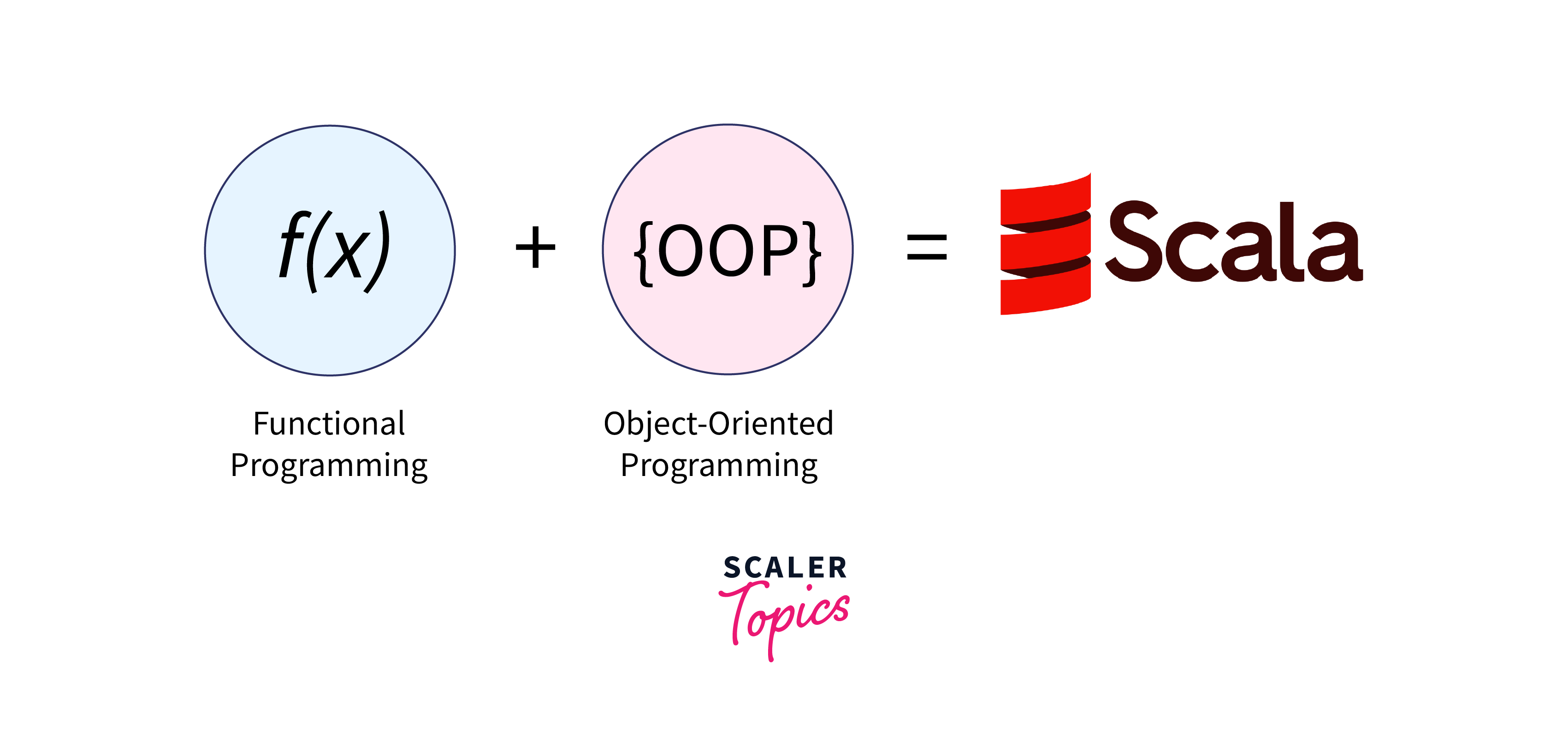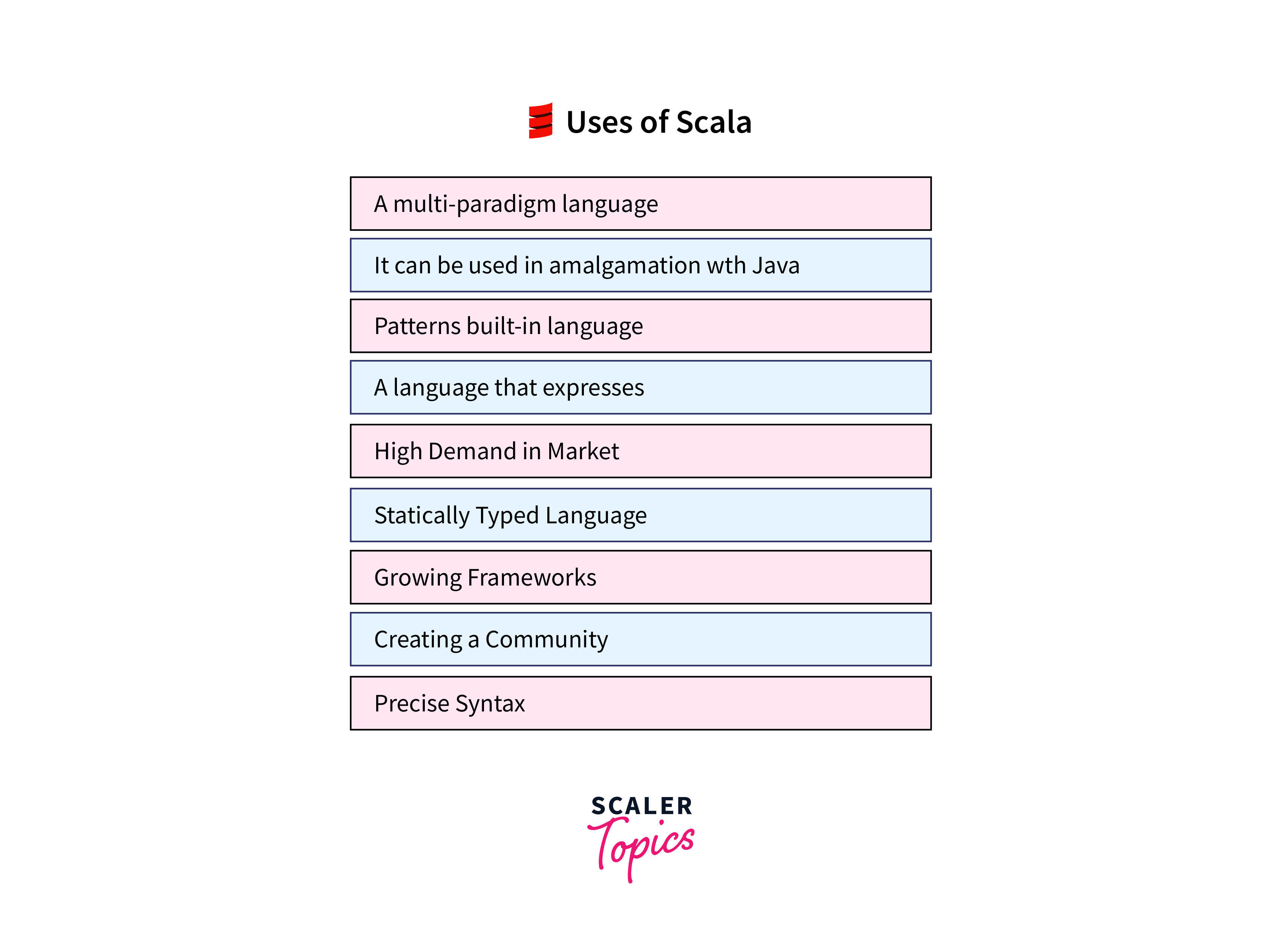Introduction to Scala
Overview
Scala is a powerful and versatile programming language that combines functional and object-oriented programming paradigms. Scala is designed to be concise, elegant, and highly extensible, making it suitable for a wide range of applications, from web development to big data processing.
What is Scala?
Scala is a versatile and powerful programming language that combines elements of both functional and object-oriented programming paradigms. It was created by Martin Odersky and first released in 2003. The name "Scala" is a blend of "scalable" and "language" reflecting its design goal of being able to scale from small scripts to large-scale software applications.

Scala eliminates the concept of primitive data types, treating everything as an object. Its design aims for elegant, concise, and type-safe expression of general programming patterns. Scala programs can be compiled into bytecode, enabling them to run seamlessly on the Java Virtual Machine (JVM). Additionally, Scala offers JavaScript runtime support. Scala draws inspiration from Java, as well as other influential programming languages such as Lisp, Haskell, and Pizza, shaping its unique blend of features and capabilities.
Evolution of Scala
The evolution of Scala has been a fascinating journey since its inception in the early 2000s. Here is an overview of the key milestones in the evolution of Scala:

- Inception (Early 2000s):
Scala was conceived by Martin Odersky at the École Polytechnique Fédérale de Lausanne (EPFL) in Switzerland. Odersky's goal was to develop a programming language that integrated the strengths of both functional and object-oriented programming paradigms. - First Release (2003):
Scala was first released to the public in 2003. It was designed to run on the Java Virtual Machine (JVM), which allowed developers to leverage the extensive Java ecosystem while enjoying Scala's expressive features. - Pattern Matching and Case Classes (2004):
Scala introduced pattern matching and case classes, making it more convenient to work with complex data structures and improving code readability. - 2.0 Release (2006):
The release of Scala 2.0 marked a significant milestone in the language's development. It brought improved performance, enhanced libraries, and further refinements to the language. - Adoption in Industry (Late 2000s):
Scala began to gain traction in the software industry, especially in financial institutions and tech companies. Its conciseness and scalability made it attractive for building large and complex systems. - Functional Programming Focus (2010s):
Scala continued to evolve as a functional programming language, emphasizing features such as immutable collections, higher-order functions, and type inference. The language encouraged developers to embrace functional programming concepts. - Akka and Concurrency (2010s):
The Akka toolkit, built on Scala, gained popularity for building highly concurrent and distributed systems. Scala's Actor model, combined with Akka, made it a strong choice for tackling modern distributed computing challenges. - Dotty and Scala 3 (2020):
A significant milestone was the release of Scala 3 (also known as Dotty). While maintaining compatibility with Scala 2, Scala 3 aimed to simplify and improve the language. It introduced several language enhancements and modernized the syntax. - Community and Ecosystem (Ongoing):
Scala's community continued to grow, contributing to a rich ecosystem of libraries and frameworks. Development tools, including integrated development environments (IDEs) and build tools, also matured to support Scala development.
Why Use Scala?
Scala offers a multitude of compelling reasons to use it in various software development scenarios:
- Easy to Start:
While Scala's advanced features may seem daunting at first, it offers a gentle learning curve for developers transitioning from languages like Java. Its familiar syntax and gradual adoption of functional programming concepts make it accessible to beginners. - Static Typing with Type Inference:
Scala provides strong static typing, which catches many errors at compile time. At the same time, its type inference system often allows us to write code without explicitly specifying types, striking a balance between safety and brevity. - Immutable Collections:
Scala includes a rich set of immutable collections, which are essential for writing safe and thread-safe code, especially in concurrent and parallel programming scenarios. - Concurrency and Parallelism:
Scala's Actor model and libraries like Akka simplify the development of concurrent and distributed systems. This is particularly valuable in today's world of multi-core processors and distributed computing. - Interoperability with Java:
Scala runs on the JVM, which means it can leverage the Java ecosystem, including libraries, tools, and the extensive developer community. This is a significant advantage in environments with a substantial Java codebase. - Web-Based & Desktop Application Development:
Scala is versatile enough to cater to various application domains. It's suitable for both web-based development, where frameworks like Play and Akka HTTP excel, and desktop application development, thanks to libraries like JavaFX. - Used by Big Companies:
Scala is not just a niche language; it's employed by some of the world's largest tech companies, including Twitter, LinkedIn, Netflix, and Airbnb. Its adoption by these industry leaders is a testament to its robustness and scalability.

Advantages and Disadvantages of Scala
Advantages of Scala:
- Functional and Object-Oriented Fusion:
Scala seamlessly blends functional and object-oriented programming paradigms, giving developers flexibility in choosing the right approach for their problem, leading to expressive and concise code. - Static Typing and Type Inference:
Scala's strong static typing catches errors at compile-time while its type inference reduces verbosity, resulting in more reliable and concise code. - Immutable Collections:
Scala provides a rich set of immutable collections, promoting safe and thread-safe code, particularly in concurrent and parallel programming. - Concurrency and Parallelism:
Scala's native support for concurrency through features like actors and its functional programming capabilities make it well-suited for building concurrent and parallel systems, simplifying complex concurrent tasks while ensuring thread safety. Parallelism more naturally and efficiently. - Interoperability with Java:
Scala integrates seamlessly with Java, enabling the use of Java libraries and frameworks and easing adoption in Java-centric environments.
Disadvantages of Scala:
- Learning Curve:
Scala's blend of paradigms and advanced features can be challenging for newcomers, requiring a steeper learning curve compared to simpler languages. - Complexity:
While Scala's expressiveness is an asset, it can lead to overly complex code if not used judiciously, making maintenance and debugging more challenging. - Build Tools:
Although there are build tools like sbt, they may not be as straightforward as those in more mainstream languages like Java. - Scalability in Teams:
Scala's expressiveness can lead to code that varies significantly in style and approach across different developers or teams, potentially impacting code consistency and collaboration. - Library Compatibility:
Although Scala can use Java libraries, not all Java libraries are seamlessly compatible due to differences in language features and idioms. - Community Size:
While the community is active and growing, it may not be as extensive as communities for more widely used languages like Java or Python.
Applications of Scala
Scala, with its versatility and powerful features, finds applications in various domains and can be used for a wide range of software development purposes. Here are some of the key applications of Scala:
1. Web Development:
- Play Framework:
Scala is often used with the Play Framework to build high-performance, scalable web applications. Play's reactive and non-blocking architecture pairs well with Scala's concurrency features.
2. Big Data Processing:
- Apache Spark:
Scala is the primary language for Apache Spark, one of the most popular big data processing frameworks. Its functional programming capabilities are well-suited for handling large-scale data processing tasks efficiently.
3. Concurrency and Distributed Systems:
- Akka:
Scala's Actor model, combined with the Akka toolkit, is a powerful combination for building concurrent and distributed systems. Akka's actors provide a straightforward way to manage and scale concurrent applications.
4. Desktop Applications:
- JavaFX:
Scala can be used to develop cross-platform desktop applications with JavaFX, which is a popular Java library for creating rich graphical user interfaces.
5. Microservices:
- Scala's expressive and concise code makes it a great choice for building microservices. Frameworks like Lagom provide a streamlined approach to developing microservices with Scala.

Conclusion
- Scala is a statically typed, versatile programming language that seamlessly combines functional and object-oriented programming paradigms, offering expressive and concise code for a wide range of applications.
- Scala was introduced in the early 2000s by Martin Odersky and achieved major milestones including the release of Scala 2 and the recent overhaul of Scala 3 (Dotty), introducing modern language features.
- Scala offers various advantages like immutability, concise syntax, concurrency, pattern matching, and interoperability with Java, making it versatile and reliable for various application domains.
- Scala is used for web development, big data processing with Apache Spark, concurrent systems with Akka, and building scalable microservices, among other applications.
